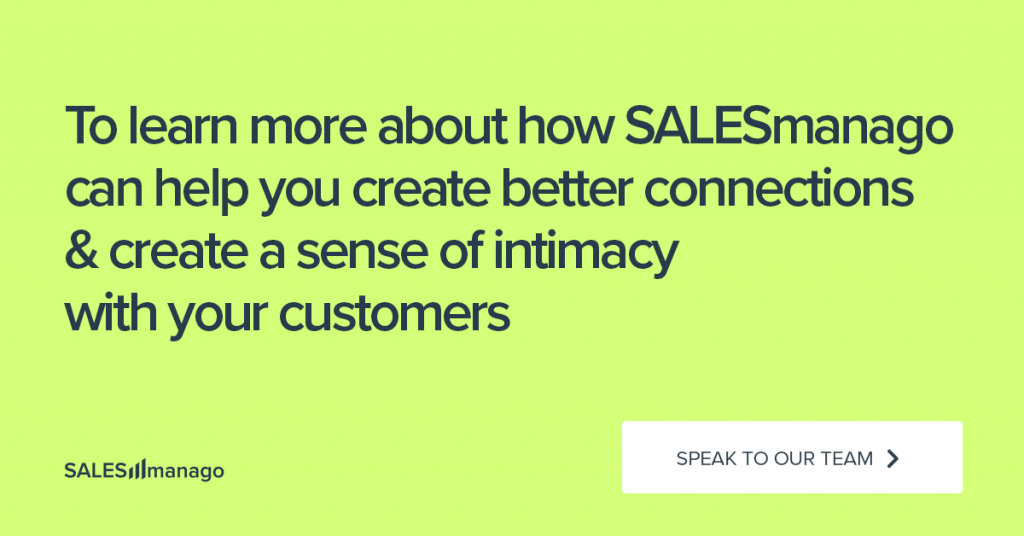
In 2023, intelligent eCommerce businesses are leaning towards a CVL-ROI (Customer Lifetime Value Return on Investment) approach. Soaring “soaring pay per click and pay per lead costs make existing customers simply too valuable to lose them on trivial occasions. However, maintaining a strong and healthy customer base requires loyalty. This can only be expected from customers who feel that the business knows them so well that going elsewhere would result in a serious drop in customer experience. This level of connection is referred to as Customer Intimacy. In this article, we present a detailed, 3-step guide to reach and sustain Customer Intimacy.
Customer Intimacy surpasses superficial interactions and focuses on building long-term relationships with customers by understanding their needs, preferences, and desires. It differs from Customer Relationships, as it is much deeper and rooted in well-earned trust, resulting in hard-to-break loyalty. Loyal customers not only make repeat purchases but also become advocates for the brand.
Take The Cupid Score assessment to find out how well you’re building customer intimacy today.
The challenging part is that trust and loyalty must be earned. To achieve Customer Intimacy, marketers must gradually bridge the gap over time, progressively understanding their customers better. Above all, they must repeatedly prove, in various life circumstances, that they understand customers’ needs better than anyone else by consistently delivering spot-on offers and marketing communications.
This Customer Intimacy-building process requires the utilization of various tools and assets across three stages:
- Building long-term relationships
- Providing unparalleled personalised experience
- Measuring customer loyalty over time
Building Long-Term Relationships:
To establish and strengthen bonds with customers, eCommerce needs compelling programs, dedicated personnel, regular feedback, and an open channel of communication. Together, they engage customers with the product or brand and continually analyze feedback.
Loyalty Programmes: Implementing loyalty programs is an excellent way to encourage repeat purchases. By offering exclusive rewards, discounts, or redeemable points, companies motivate customers to engage with their brand repeatedly.
Dedicated Customer Success Teams: Establishing customer success teams ensures that customers receive personalized attention and support throughout their journey. These teams are trained to proactively address customer needs, resolve issues, and provide guidance, fostering trust and loyalty.
Customer Satisfaction Surveys: Regularly collecting feedback through surveys allows businesses to gauge customer satisfaction levels. This valuable input enables companies to identify areas for improvement and make informed decisions to enhance the overall customer experience.
Engagement on Social Media: Actively engaging with customers on social media platforms nurtures a sense of community and builds brand loyalty. Responding to queries, addressing concerns, and showcasing user-generated content demonstrates a genuine commitment to customer satisfaction.
Providing Unparalleled Personalized Experiences:
The knowledge gained while establishing and strengthening bonds with customers should result in highly individualized treatment, both in offers and communications.
Utilising Customer Data: By analysing customer data, companies gain insights into individual preferences, purchase history, and browsing behaviour. This information can be used to tailor product recommendations, anticipate customer needs, and deliver relevant offers.
Special Offers and Discounts: Providing exclusive offers and discounts tailored to individual customers strengthens their connection with the brand. Personalized promotions make customers feel valued and appreciated, leading to increased loyalty and repeat purchases.
Excellence in Customer Service: Investing in comprehensive customer service training ensures that customer inquiries and issues are resolved promptly and satisfactorily. Well-trained staff who demonstrate empathy, professionalism, and problem-solving skills can significantly enhance the customer experience.
Measuring Customer Loyalty Over Time:
Measuring customer loyalty is crucial for understanding the effectiveness of Customer Intimacy strategies. Frequent probing of the customer base enables marketers to implement enhancements and avoid dead ends in the process of strengthening bonds with customers.
Net Promoter Score (NPS): NPS measures customers’ willingness to recommend products or services to others. By regularly collecting NPS data, businesses can track changes in customer sentiment and identify areas for improvement.
Customer Satisfaction Surveys: Conducting regular surveys provides valuable insights into overall customer satisfaction levels. These surveys can focus on specific touchpoints or the entire customer journey, allowing businesses to address pain points and enhance the overall experience.
Measuring Frequency of Purchases: Tracking the frequency of customer purchases provides an objective measure of loyalty. Repeat purchases indicate customer satisfaction and an ongoing relationship with the brand.
Loyalty Programmes: Monitoring customer participation and engagement in loyalty programs provides a tangible metric for assessing loyalty. Analysing program data helps identify trends and understand the effectiveness of rewards and incentives.
Customer Intimacy – Strong Foundation For Stable Growth
eCommerce businesses that prioritize Customer Intimacy can not only gain a competitive advantage but also create the necessary conditions for growth. Taking this process seriously will result in a gradual increase in the average Customer Lifetime Value across your customer base and significantly reduce churn.
By achieving this, marketers can rest assured that no penny from Customer Acquisition Costs will ever be wasted.

 Follow
Follow
















